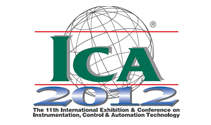Info
Venue : Kuala Lumpur Convention Centre, KLCC
Date : 22 - 24 May 2012 : 11am - 6pm
Date : 22 - 24 May 2012 : 11am - 6pm
Admission : n/a
Bookmark this Event on FACEBOOK - click to Attend
Description : The Malaysian economy registered a 7.2% GDP growth in 2010, largely contributed by the services and manufacturing sectors, which grew by 6.8% and 11.4%, respectively. Malaysia’s total Foreign Direct Investments (FDI) also hit a high of US$15.6 billion (RM47.2 billion) in same year, mainly in the manufacturing sector with a total of 910 approved projects.
Malaysia’s fundamentals are still strong, with analysts saying that a growth of 6% is achievable. This augurs well with the nation aspiring to become a high income economy by 2020. To achieve this, there has to be the unleashing of productivity-led growth and innovation, especially in the manufacturing sector, which will continue to receive a lot of attention under the Third Industrial Master Plan (IMP3, 2006-2020).
Compared to other more advanced and industrialised countries, Malaysia is able to produce high quality products at lower cost. This is because its workers are a high-skilled and knowledgeable workforce, capable of running high technology production facilities.
Under the IMP3, the machinery and equipment (M&E) industry has been earmarked to be one of the key areas for growth and development.
Globally, the M&E industry is continuously being driven by technological advances, process specialization and customer requirements for shorter throughput times, faster delivery and lower costs. The M&E manufacturers, like their counterparts in industrialised countries, are leveraging upon their strengths in core activities, such as Research & Development (R&D), software development, system integration, assembly, testing and calibration while focusing on quality of production.
Besides, the M&E, the Government has also identified 12 target growth industries in the manufacturing sector for further development and promotion. Some of these which include Medical Devices, Metals, Pharmaceuticals, Petrochemicals, Rubber-based and Food Processing, will require some form of process control, automation and measuring instruments in the manufacturing plants. With this, the opportunities are enormous and the potential largely untapped.
Petroliam Nasional Bhd's (Petronas), for example, recently announced that it has set aside RM250 billion in capital expenditure (capex) over the next five years. A big chunk of it will benefit the process control and automation sector as Petronas continues to expand and boost the efficiency of its operations.
Malaysia’s fundamentals are still strong, with analysts saying that a growth of 6% is achievable. This augurs well with the nation aspiring to become a high income economy by 2020. To achieve this, there has to be the unleashing of productivity-led growth and innovation, especially in the manufacturing sector, which will continue to receive a lot of attention under the Third Industrial Master Plan (IMP3, 2006-2020).
Compared to other more advanced and industrialised countries, Malaysia is able to produce high quality products at lower cost. This is because its workers are a high-skilled and knowledgeable workforce, capable of running high technology production facilities.
Under the IMP3, the machinery and equipment (M&E) industry has been earmarked to be one of the key areas for growth and development.
Globally, the M&E industry is continuously being driven by technological advances, process specialization and customer requirements for shorter throughput times, faster delivery and lower costs. The M&E manufacturers, like their counterparts in industrialised countries, are leveraging upon their strengths in core activities, such as Research & Development (R&D), software development, system integration, assembly, testing and calibration while focusing on quality of production.
Besides, the M&E, the Government has also identified 12 target growth industries in the manufacturing sector for further development and promotion. Some of these which include Medical Devices, Metals, Pharmaceuticals, Petrochemicals, Rubber-based and Food Processing, will require some form of process control, automation and measuring instruments in the manufacturing plants. With this, the opportunities are enormous and the potential largely untapped.
Petroliam Nasional Bhd's (Petronas), for example, recently announced that it has set aside RM250 billion in capital expenditure (capex) over the next five years. A big chunk of it will benefit the process control and automation sector as Petronas continues to expand and boost the efficiency of its operations.
| Visitors: | Industries: |
|
|

Thanks for this exceptional informative blog
ReplyDeleteFood processing JObs